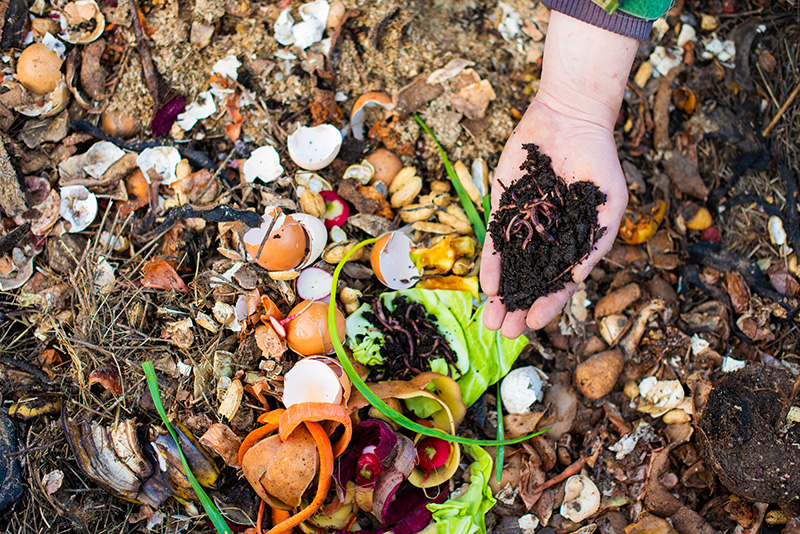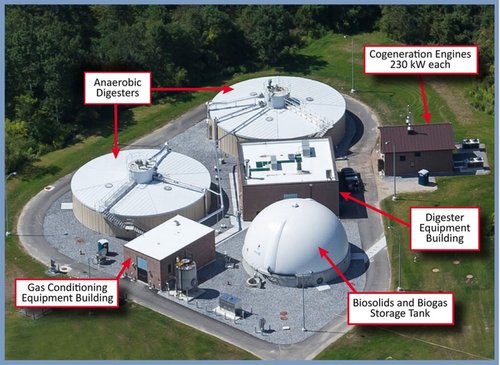
hello@domain.com
+00 999 123 456

Anaerobic digestion is a biological process used to treat the biosolids that are a by-product of wastewater treatment. In the process, bacteria capable of living in the absence of oxygen utilize biodegradable matter in biosolids as a food source, reducing the organic matter to more stable end products.
Anaerobic digestion accomplishes the following:

LAWPCA has two fixed cover mesophilic anaerobic digesters, each with a capacity of 690,000 gallons, which provide detention and mixing of wastewater biosolids and high organic strength feedstocks. Each digester has a gas collection pipe that ties into the gas system and the storage membrane of the digested sludge and biogas storage tank.
In 2022, LAWPCA utilized the biogas in co-generation units to produce 1,753,771 kW’s. This was enough to power the equivalent of approximately 267 Maine households. These same units also produced enough waste heat to provide heating to the equivalent of 78 Maine households.

The Lewiston-Auburn Water Pollution Control Authority (LAWPCA) was created by an act of the Maine Legislature in 1967 to provide wastewater treatment services to the Cities of Lewiston and Auburn.
As of October 15, 2021, we will no longer accept RV waste
One resource for finding alternative locations is here:
Our facility is regularly staffed Monday – Friday from 6:00 a.m. to 2:00 p.m.
Please contact us to schedule visits and appointments.
Telephone: (207) 782-0917